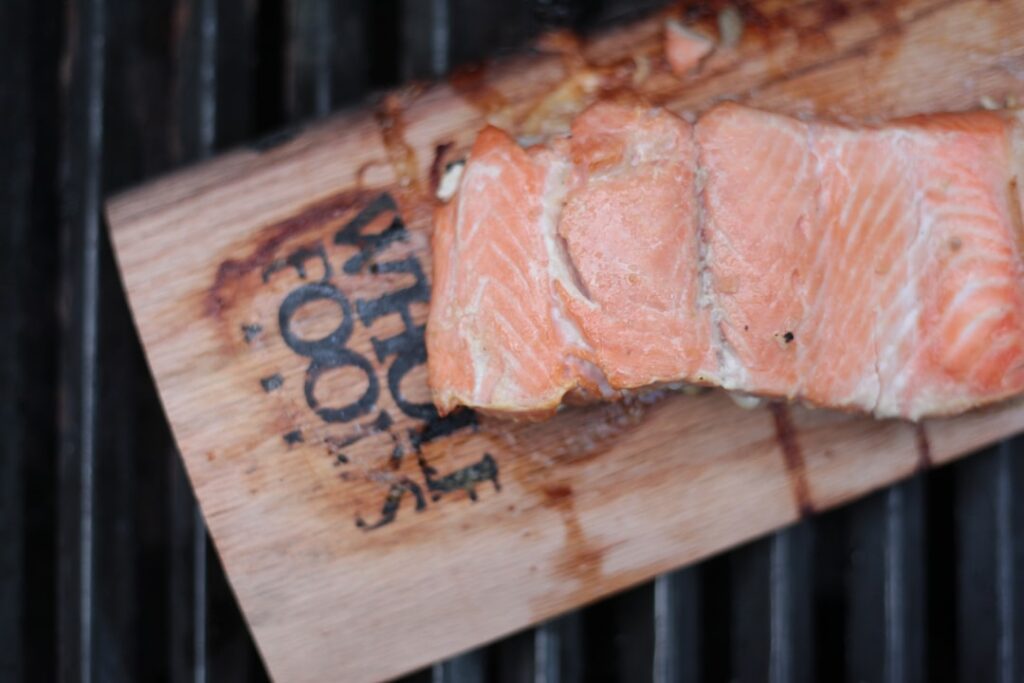Why Salmon Is the Perfect Budget-Friendly Protein
A salmon recipe doesn’t have to break the bank to deliver restaurant-quality flavor and nutrition. With salmon providing about 34g of protein per 6-ounce fillet and being rich in heart-healthy omega-3 fatty acids, it’s one of the most nutrient-dense proteins you can buy.
Quick Salmon Recipe Essentials:
- Cook Time: 12-20 minutes depending on method
- Internal Temperature: 125°F for medium-rare, 145°F for well-done
- Best Budget Options: Pink salmon, farmed Atlantic, frozen fillets
- Top Cooking Methods: Baked, pan-seared, grilled, air-fried
- Key Seasonings: Lemon, garlic, dill, honey, soy sauce
Many home cooks think salmon is expensive, but smart shopping and simple techniques make it surprisingly affordable. As one recipe developer noted, “Salmon has the superpower of going from drab to fab in minutes” – and that change doesn’t require fancy ingredients or complicated methods.
The secret is knowing which salmon types offer the best value, how to shop for deals, and mastering a few foolproof cooking techniques that work every time. Whether you’re feeding a family on a weeknight or meal-prepping for the week ahead, salmon delivers maximum nutrition and flavor for your dollar.
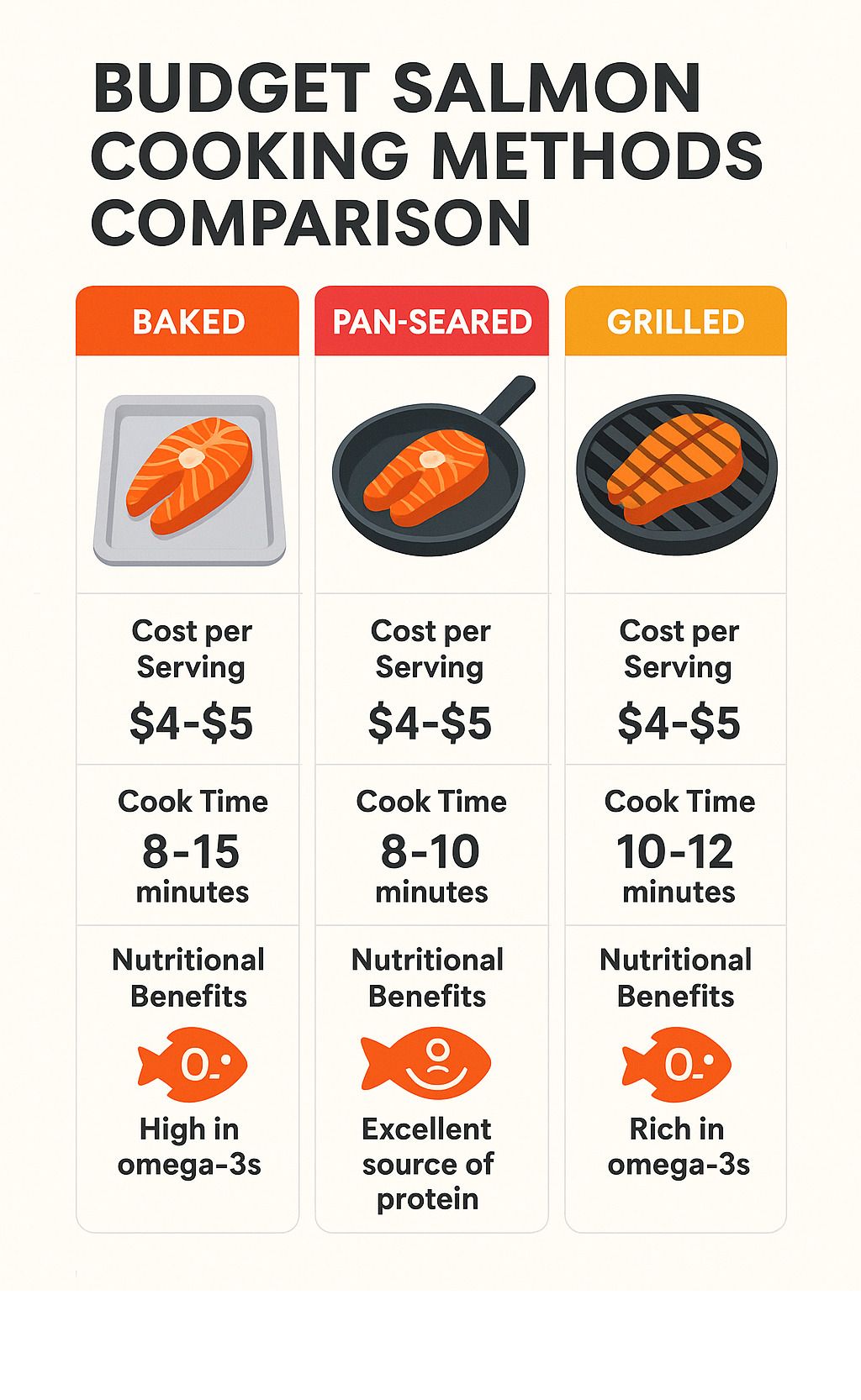
Salmon recipe terms you need:
Why Salmon Is a Budget-Friendly Superfood
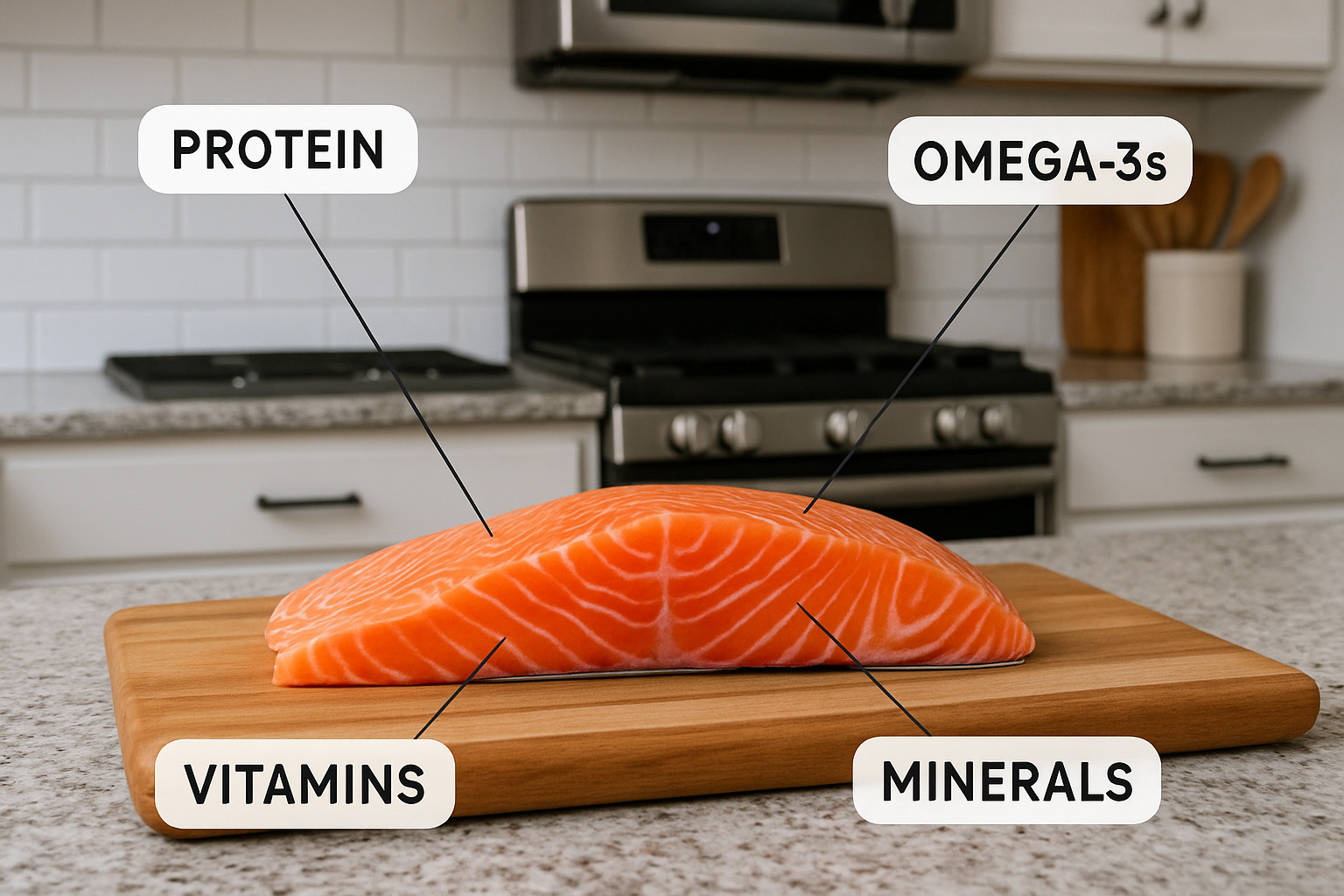
Here’s something that might surprise you: salmon recipe ingredients don’t have to cost a fortune to deliver superfood nutrition. When you break down the cost per gram of protein and omega-3 fatty acids, salmon often beats out many other “healthy” proteins that fill up grocery carts.
Think about it this way – a 6-ounce salmon fillet gives you about 34 grams of complete protein plus those heart-healthy omega-3s that your body can’t make on its own. Compare that to a premium grass-fed steak or organic chicken breast, and salmon’s nutritional density starts looking pretty impressive.
The real magic happens when you consider the long-term savings. Scientific research on omega-3 benefits shows that regular salmon consumption supports cardiovascular health and reduces inflammation throughout your body. That’s preventive healthcare you can actually taste – and afford.
What makes salmon truly budget-friendly is its sustainability factor. Unlike some proteins that require massive resources to produce, well-sourced salmon offers an environmentally responsible choice that doesn’t compromise on nutrition or flavor.
Health Benefits at a Glance
Every bite of salmon is working overtime for your health in ways that expensive supplements try to replicate. The brain support you get from omega-3 fatty acids DHA and EPA helps with everything from memory to mood – no prescription required.
The anti-inflammatory compounds in salmon act like nature’s own medicine cabinet, helping reduce inflammation markers that contribute to chronic health issues. Your joints, heart, and even your skin notice the difference.
Don’t overlook the B-vitamins either. These essential nutrients keep your energy metabolism humming and support your nervous system. It’s like having a multivitamin that actually tastes good and fills you up.
Comparing Salmon Types & Prices
Smart salmon shopping starts with understanding that not all salmon are created equal – and that’s actually good news for your wallet.
Wild Pacific varieties each bring something different to the table. Sockeye salmon delivers that deep red color and rich, almost meaty flavor that salmon lovers crave. It’s the most expensive option, but the omega-3 content is through the roof. Coho salmon offers a gentler introduction to wild salmon with its orange-pink flesh and milder taste, sitting comfortably in the middle price range.
Pink salmon is your budget hero here. It has the lightest flavor and the friendliest price tag, making it perfect for families or anyone just starting their salmon journey.
Farmed Atlantic salmon deserves serious consideration for budget-conscious cooks. It’s available year-round, costs less than wild varieties, and has a higher fat content that makes it nearly foolproof to cook. When you’re learning the ropes with a new salmon recipe, that forgiveness factor is worth its weight in gold.
The texture differences matter too. Farmed Atlantic’s higher fat content creates that buttery, flaky result that makes people think you’re a kitchen genius, while wild varieties offer a firmer bite and more intense flavor that pairs beautifully with simple seasonings.
Smart Shopping: From Fish Counter to Freezer
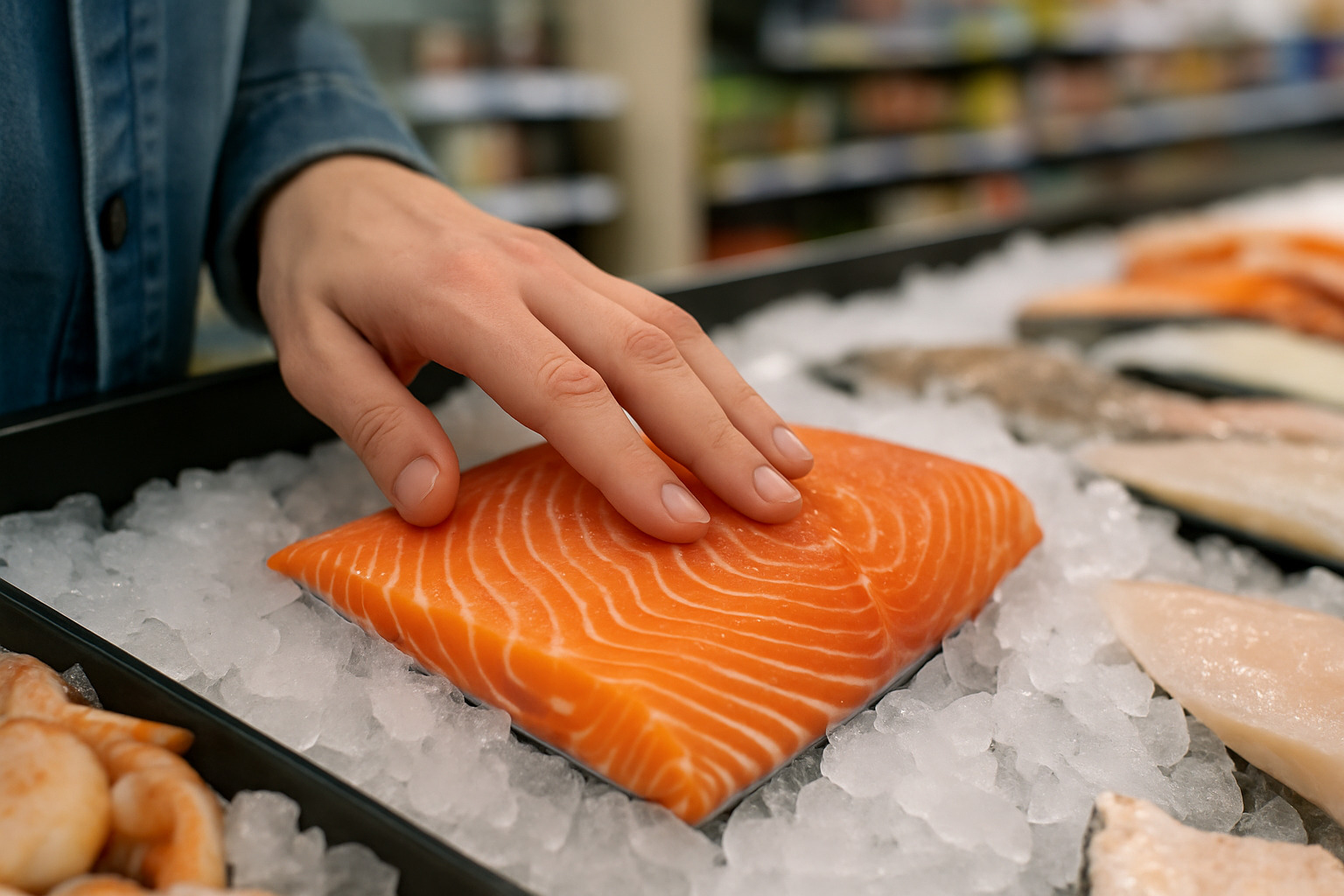
Walking up to the fish counter can feel intimidating, but knowing what to look for turns you into a confident salmon shopper. The best salmon recipe starts with quality fish, and that doesn’t always mean the most expensive option.
Fresh salmon should have a clean, ocean-like smell – never that strong “fishy” odor that makes you wrinkle your nose. The flesh should look vibrant and moist, with colors ranging from deep red to pale pink depending on the variety. When you press it gently (ask the fishmonger first!), it should spring back rather than leaving an indent.
Here’s where smart shoppers get ahead: frozen salmon often costs 30-40% less than fresh and can be just as delicious. Flash-frozen salmon locks in freshness and keeps well for up to 8 months in your freezer, though it’s at peak quality for about 3 months. The trick is thawing it properly – overnight in the refrigerator gives you the best texture.
Timing your shopping makes a huge difference too. Copper River sockeye season runs from May through September, so that’s when you’ll find the best prices on this premium variety. Many shoppers don’t realize that fish counters often discount their inventory at the end of the day – sometimes 20-50% off perfectly good salmon that just needs to be cooked tonight.
Following the Monterey Bay guidelines and checking out More info about Sustainable Menu Options helps ensure you’re buying responsibly sourced fish. This supports stable pricing long-term and keeps our oceans healthy.
Insider Tips to Stretch Your Seafood Budget
The savviest salmon shoppers have a few tricks up their sleeves that can seriously cut costs without sacrificing quality.
Grocery store apps are goldmines for tracking salmon sales. Set up alerts for your favorite stores and stock up when prices drop. Many shoppers miss out on “trim pieces” – those smaller, oddly-shaped cuts that work perfectly for most recipes but cost significantly less than perfect fillets.
When you’re feeding a crowd, ask about buying a whole salmon side. You’ll typically save money and can portion it exactly how you want. Plan for about half a pound per person, and don’t be shy about asking your fishmonger to cut it up for you.
Ethnic markets often have competitive pricing on quality salmon, and their turnover is usually high, meaning fresher fish. One budget-conscious cook we know swears by buying a 3-pound salmon side and portioning it herself – she saves about $4 per pound compared to individual fillets.
Vacuum-sealing individual portions before freezing is a game-changer. You can even pre-season the salmon before sealing, which saves prep time on busy weeknights. Label each package with your planned cooking method and the date, so you can grab exactly what you need for tonight’s dinner.
The key is thinking ahead and being flexible. Sometimes the best deal isn’t the variety you planned to buy, but with a good salmon recipe in your back pocket, you can make any type delicious.
Budget-Friendly Cooking Methods: The Ultimate Salmon Recipe Playbook
Here’s the wonderful truth about cooking salmon: you don’t need fancy equipment or expensive ingredients to create something absolutely delicious. Salmon’s natural oils make it incredibly forgiving, which means even if you’re new to cooking fish, you’re likely to succeed on your first try.
The secret to budget-friendly salmon cooking is choosing methods that work efficiently and deliver consistent results. Oven baking uses your oven’s residual heat wisely and requires minimal hands-on time. Pan-searing cooks quickly to save energy while creating that coveted crispy skin. Air frying cuts cooking time in half compared to traditional ovens, and sheet pan cooking lets you prepare your entire meal – salmon plus vegetables – in one go.
Each method has its own charm, but they all share one thing in common: they transform simple ingredients into something that tastes like it came from an upscale restaurant.
Baked Salmon Recipe for Busy Nights
This foolproof salmon recipe has saved countless weeknight dinners. It’s the kind of recipe you can start when you walk in the door and have on the table in 20 minutes.
Start by preheating your oven to 400°F and lining a baking sheet with foil – trust me, this makes cleanup a breeze. For four 6-ounce salmon fillets, whisk together 2 tablespoons olive oil, the juice of one lemon, 2 minced garlic cloves, and 1 teaspoon dried dill. Season your salmon with salt and pepper, then brush this mixture over each fillet.
Place the salmon skin-side down on your prepared pan and top with thin lemon slices. Bake for 12-15 minutes until the internal temperature reaches 125°F for perfectly medium-rare salmon. The beauty of this method is that it scales beautifully – whether you’re cooking for two or feeding a crowd with a large salmon side, the technique stays the same.
Pan-Seared Garlic-Butter Salmon Recipe
If you want to feel like a professional chef in your own kitchen, this salmon recipe delivers restaurant-quality results every single time. The key is creating a gorgeous crispy exterior while keeping the inside tender and flaky.
Pat your salmon completely dry and season generously with salt and pepper. Heat oil in a non-stick pan over medium-high heat until it shimmers. Place the salmon presentation-side down and resist the urge to move it – let it sear undisturbed for 3-4 minutes until it releases easily from the pan.
Flip the salmon and cook for just 1 minute more, then add a generous knob of butter to the pan. As the butter melts, add minced garlic and start basting continuously, spooning that golden, garlicky butter over the salmon for about 1½ minutes. Pull the salmon when it reaches 122°F internally, then let it rest for 3 minutes to finish cooking.
This butter-basting technique infuses incredible flavor while creating a beautiful golden crust that makes even budget salmon taste luxurious.
Grilled & Air-Fryer Variations
Grilling salmon brings out its natural smoky sweetness, and the technique is simpler than you might think. Keep the skin on – it prevents sticking and adds wonderful crispy texture. Oil your grates thoroughly, then place the salmon skin-side down. Cook for 10 minutes without moving it, then flip for just 2 minutes for perfect medium-rare results.
Air fryer salmon might just be the easiest method of all. Set your air fryer to 400°F and cook for 7-9 minutes depending on thickness. The circulating air cooks the salmon evenly, so there’s no need to flip. Just brush lightly with oil to prevent drying, and you’ll have perfectly cooked salmon with minimal effort and maximum flavor.
Flavor on a Dime: Seasonings, Marinades & Dietary Swaps
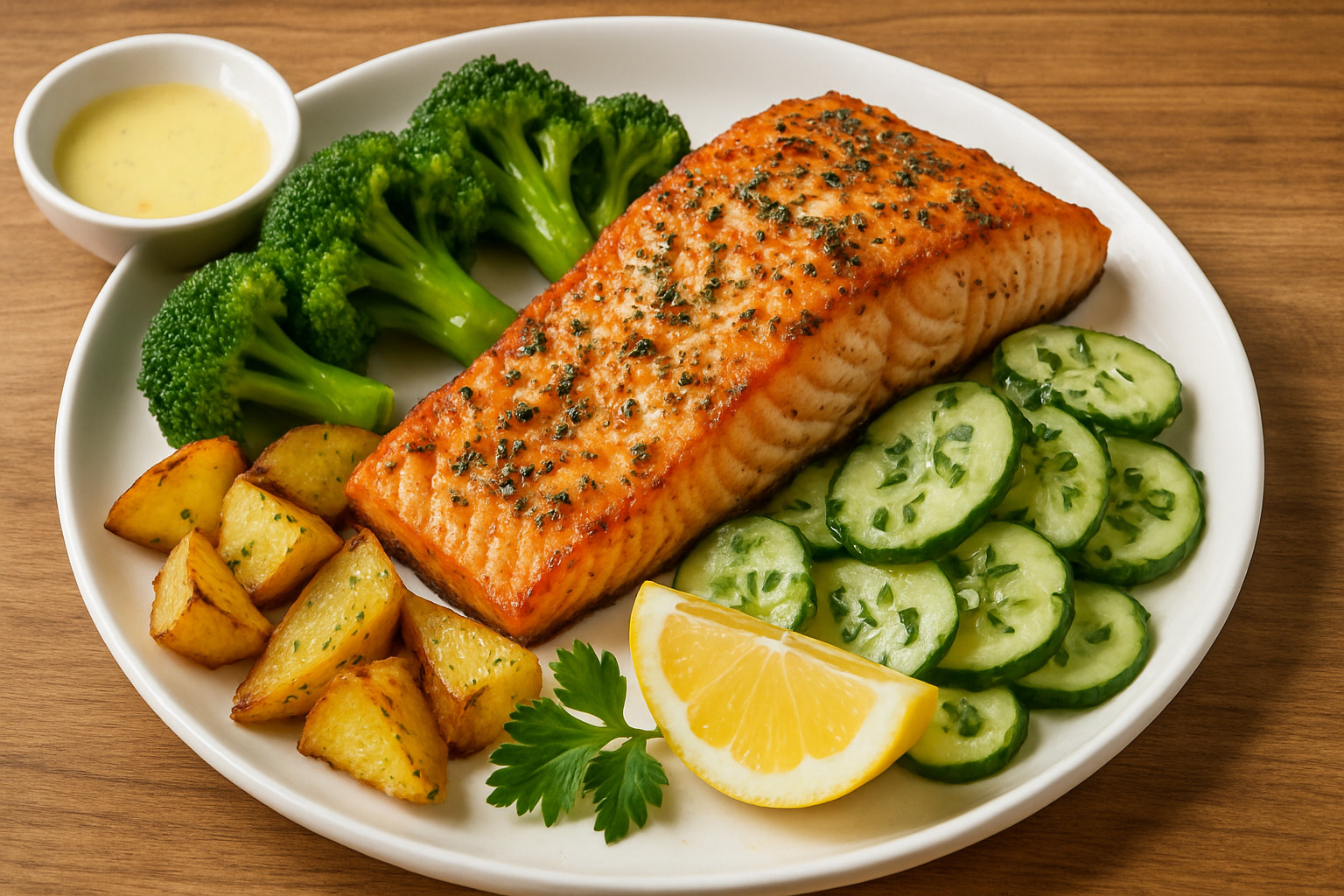
The best part about perfecting your salmon recipe game? You don’t need to raid the gourmet spice aisle to create amazing flavors. In fact, some of the most memorable salmon dishes come from simple combinations you probably already have in your pantry.
Classic lemon-dill never goes out of style – just olive oil, fresh lemon juice, and dried dill create that restaurant-quality taste we all crave. For something with more depth, try a honey-soy glaze using equal parts honey and soy sauce with a minced garlic clove. The sweet-savory balance makes even budget salmon taste expensive.
Mediterranean-inspired preparations work beautifully too. Olive oil, oregano, lemon zest, and a sprinkle of crumbled feta cheese transform your fillet into something that feels like a Greek island vacation. Meanwhile, Asian-inspired flavors using soy sauce, fresh ginger, and a drizzle of sesame oil bring that umami richness that makes salmon absolutely irresistible.
The beauty of salmon is how it adapts to different dietary needs without losing its appeal. For gluten-free cooking, simply swap tamari for regular soy sauce in any recipe. Dairy-free preparations are easy – use olive oil instead of butter for basting, and you’ll still get incredible flavor. Keto followers can focus on high-fat preparations with avocado slices and crushed nuts, while low-carb enthusiasts can pair their salmon with cauliflower rice or spiralized zucchini.
Similar to how we approach Branzino preparation, the key is enhancing salmon’s natural richness rather than masking it with heavy sauces.
DIY Marinade Matrix
Understanding how marinades work takes the guesswork out of flavoring your salmon. Think of it like a simple formula where each component plays a specific role.
Your acid component – whether that’s lemon juice, white wine vinegar, or rice vinegar – helps tenderize the fish and brightens the overall flavor. The fat portion carries flavors and keeps the salmon moist during cooking. Olive oil is classic, but melted butter or sesame oil can completely change the character of your dish.
Aromatics are where you get creative. Minced garlic, fresh herbs, grated ginger, or finely diced onion each bring their own personality. A touch of sweetness from honey, maple syrup, or brown sugar balances the acid and helps create beautiful caramelization. Finally, umami boosters like soy sauce, fish sauce, or miso paste add that savory depth that makes people ask for your recipe.
The secret timing? Marinate for just 15-30 minutes maximum. Any longer and the acid starts “cooking” the fish, giving it a mushy texture. For dry rubs, pat your salmon completely dry first so the seasonings actually stick instead of sliding off.
Quick Sauces & Toppers
Sometimes the simplest accompaniments make the biggest impact on your salmon recipe. A 5-minute tzatziki using Greek yogurt, grated cucumber, lemon juice, dried dill, and minced garlic costs under a dollar per serving but tastes like you ordered it at an upscale Mediterranean restaurant.
Fresh pineapple salsa brings tropical vibes to grilled salmon. Just dice fresh pineapple, red onion, jalapeño, and cilantro, then toss with lime juice. The sweet-spicy combination cuts through salmon’s richness perfectly, and it keeps well in the fridge for several days.
For herb lovers, chimichurri is a game-changer. Blend fresh parsley, oregano, garlic, red wine vinegar, and olive oil until chunky. This bright green sauce makes enough for multiple meals and actually improves after sitting overnight as the flavors meld together.
The best part about these sauces? They work just as well with leftover salmon the next day, turning simple reheated fish into something that feels completely new.
Leftovers & Meal Prep Magic
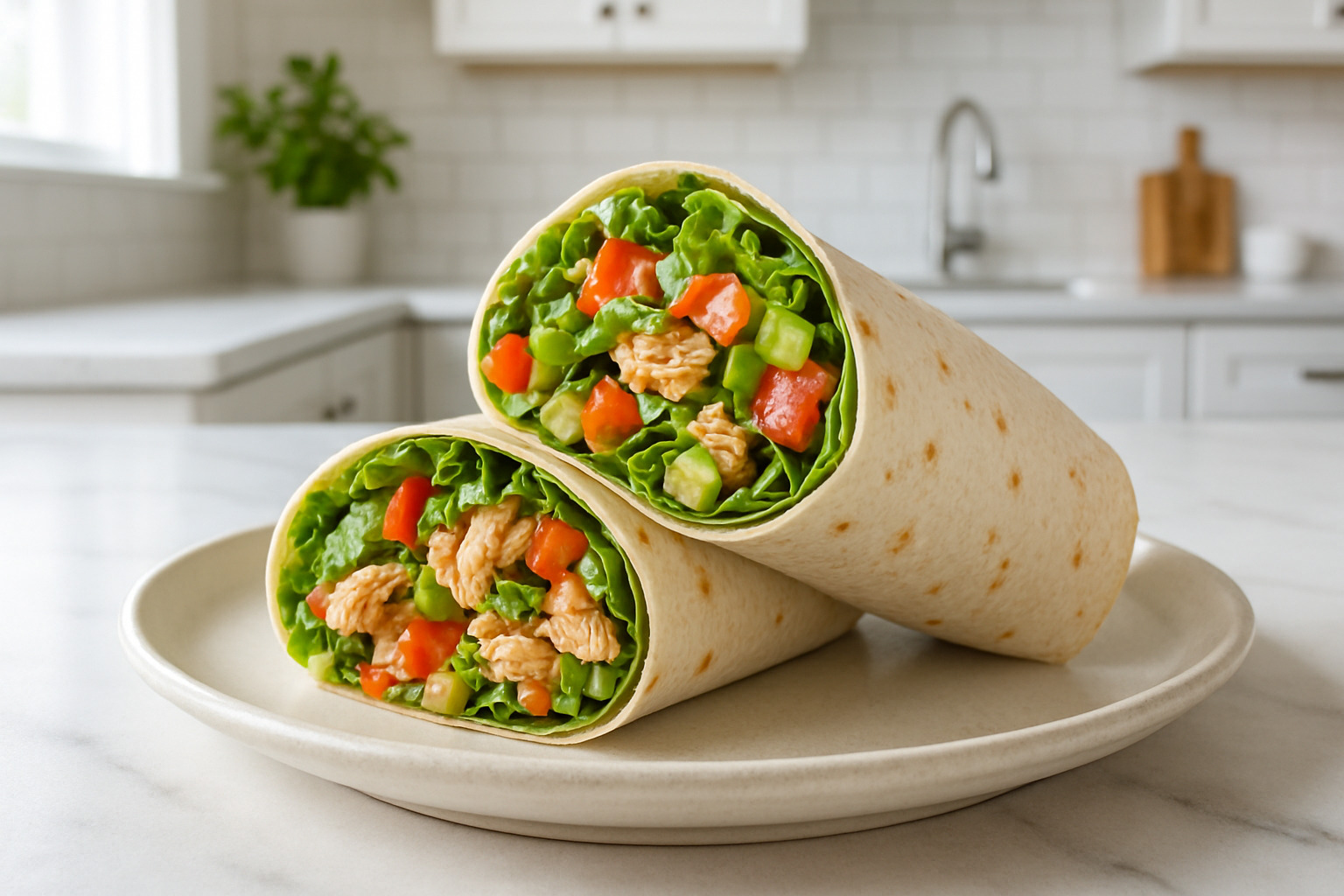
Here’s where your salmon recipe investment really pays off – cooked salmon might be even more versatile than fresh. I’ve finded that leftover salmon opens up a treasure trove of quick, delicious meals that taste completely different from the original dish.
The secret is understanding that salmon actually improves with time. Those flavors you worked so hard to build? They deepen and meld overnight, creating something entirely new. It’s like getting a bonus meal from your original cooking effort.
Proper storage is crucial for maintaining quality. Cool your salmon completely before tucking it into the refrigerator, where it’ll stay fresh for 3-4 days. Store it in airtight containers to prevent your fridge from smelling like fish, and keep sauces separate to maintain the best texture. For longer storage, cooked salmon freezes beautifully for up to 3 months.
Next-Day Changes
The change possibilities are endless, and each approach creates a completely different dining experience. For cold preparations, flaked salmon becomes the star of creamy salmon salad mixed with mayo, celery, and fresh herbs – perfect for sandwiches or crackers. Grain bowls combine leftover salmon with quinoa, roasted vegetables, and a bright vinaigrette for a healthy, filling lunch. Pasta salad gets an upgrade when you toss cooled salmon with cooked pasta, crisp vegetables, and lemon dressing.
Warm applications bring out different flavors entirely. Salmon tacos come together quickly when you warm flaked salmon with cumin, lime juice, and a touch of chili powder. Day-old rice transforms into restaurant-quality fried rice with the addition of salmon, frozen vegetables, and soy sauce. For a fancy brunch, try salmon eggs Benedict – top toasted English muffins and poached eggs with warmed salmon flakes.
The beauty of these changes is that each method highlights different aspects of the salmon’s flavor profile, so you never feel like you’re eating the same meal twice.
Reheating Without Drying Out
The biggest mistake people make with leftover salmon is reheating it too aggressively. High heat turns perfectly cooked salmon into something resembling cardboard, but gentle reheating preserves all that moisture and flavor you worked to achieve.
The steam method works wonderfully – add a splash of water to your pan, place the salmon inside, cover with a lid, and heat gently until warmed through. For the low oven approach, wrap salmon in foil and warm at 275°F for 10-12 minutes. When using the microwave, cover the salmon with a damp paper towel and use 50% power to heat gradually.
What you absolutely want to avoid is high-temperature reheating, dry heat without added moisture, or microwaving uncovered. These methods guarantee disappointing results and waste your delicious leftovers.
The real magic happens when you realize that yesterday’s dinner salmon becomes today’s lunch salad, tomorrow’s breakfast scramble, or next week’s frozen meal prep. It’s like having a culinary Swiss Army knife in your refrigerator.
Frequently Asked Questions about Budget Salmon Cooking
How do I know when salmon is done?
Getting perfectly cooked salmon is easier than most people think, and it doesn’t require fancy equipment or years of experience. The secret lies in combining what you see with what your thermometer tells you.
When salmon is properly cooked, the flesh transforms from that bright coral-pink color to a lighter, more opaque pink. You’ll notice the fish flakes easily when you gently test it with a fork, but it shouldn’t fall apart at the slightest touch. For those who prefer their salmon with a slightly translucent center, that’s your medium-rare sweet spot.
Temperature is your best friend when learning to cook salmon. An instant-read thermometer inserted into the thickest part will give you these guidelines: 125°F for medium-rare (moist and tender), 135°F for medium (still juicy), and 145°F for the FDA-recommended fully cooked temperature.
Here’s something many home cooks don’t realize – salmon continues cooking from residual heat even after you remove it from the pan or oven. This means you can pull it off the heat when it’s a few degrees shy of your target temperature, and it’ll finish cooking perfectly on the plate.
Can I substitute another fish for these recipes?
Absolutely! While our salmon recipe techniques work beautifully with salmon, they’re versatile enough to work with several other fish varieties. The key is understanding how different fish behave in the kitchen.
Steelhead trout is probably your closest match to salmon – it has a similar fat content and flavor profile, plus it often costs 10-20% less than salmon. Arctic char offers a milder taste and cooks almost identically to salmon, making it perfect for anyone who finds salmon too “fishy.”
If you’re looking for even more budget-friendly options, cod works well with these cooking methods, though you’ll want to reduce your cooking time by about 25% since it’s a leaner fish. Mahi-mahi brings a firm texture that’s excellent for grilling, though it has a completely different flavor profile.
The beauty of these cooking techniques is that they’re forgiving enough to work across different fish types. Just remember to adjust your timing based on thickness and fat content – leaner fish cook faster and can dry out more easily.
What sides pair well without breaking the bank?
Creating a complete salmon dinner doesn’t have to strain your budget, especially when you choose sides that complement the fish while adding nutritional value and visual appeal.
Roasted vegetables are your best friend here – think broccoli, asparagus, or Brussels sprouts seasoned simply with olive oil, salt, and a squeeze of lemon. The genius move is cooking them alongside your salmon for a true one-pan meal that saves time, energy, and cleanup.
For heartier appetites, grain-based sides stretch the meal beautifully. Lemon rice with fresh herbs feels restaurant-neat but costs pennies per serving. Quinoa pilaf with whatever vegetables are on sale adds protein and fiber, while farro salad with dried cranberries brings a chewy texture that contrasts perfectly with flaky salmon.
Don’t overlook simple starches that cook themselves – roasted baby potatoes tossed with herbs, sweet potato wedges that caramelize in the oven, or cauliflower rice for those watching carbs. These sides often cost less than $1 per serving and transform your salmon recipe into a complete, satisfying meal.
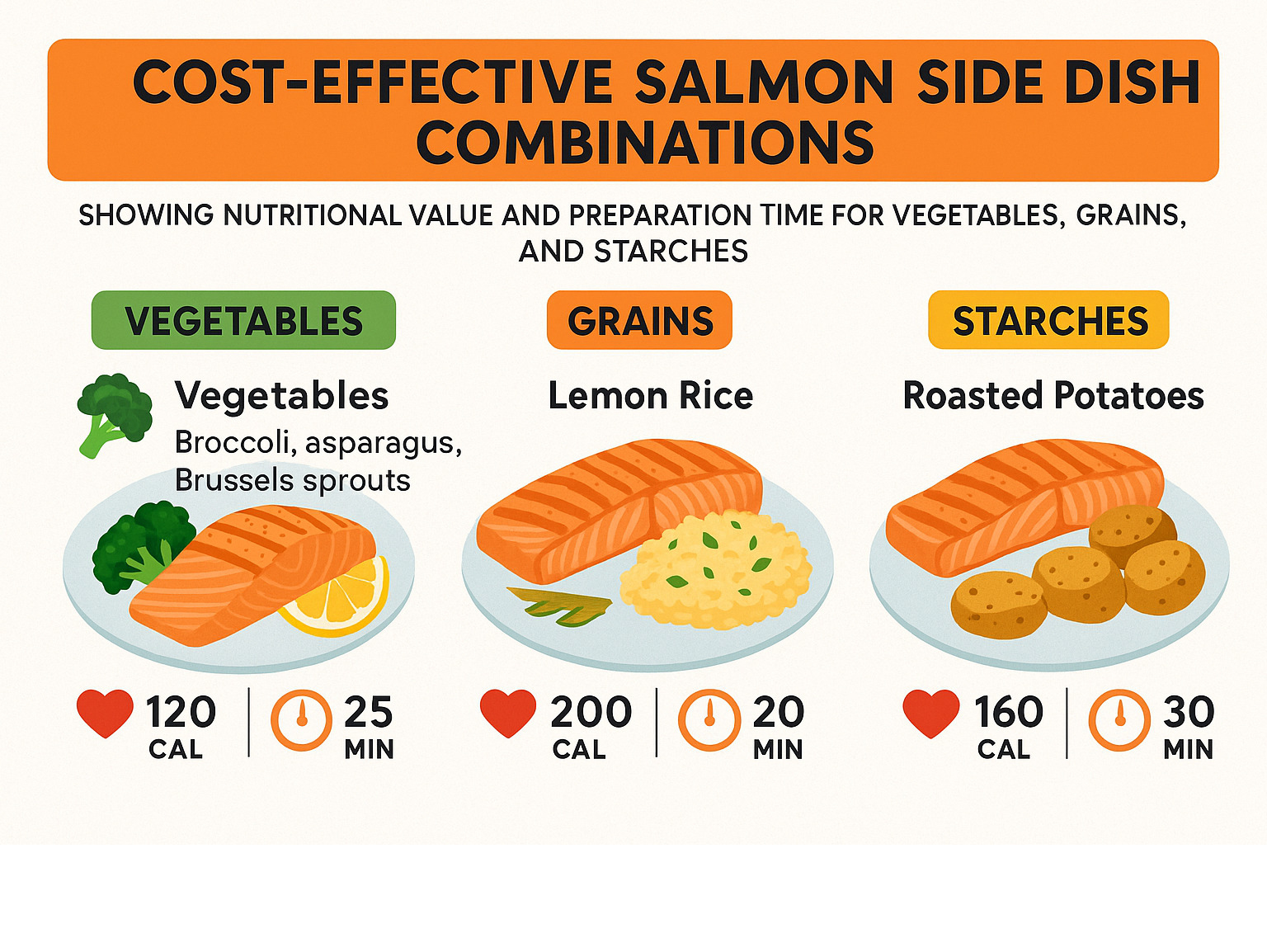
Conclusion
At The Dining Destination, we’ve finded something wonderful: you don’t need a chef’s salary to cook like one. These salmon recipe techniques prove that great seafood cooking is about understanding your ingredients, not emptying your wallet.
The magic happens when you realize that salmon actually wants to taste amazing. This forgiving fish responds beautifully to simple treatments – a squeeze of lemon, a pat of butter, maybe some fresh herbs from your windowsill garden. You’re not fighting against the ingredient; you’re working with it.
What excites us most is how these budget-friendly approaches open doors to regular seafood meals. When you know how to buy smart and cook confidently, salmon transforms from a special-occasion splurge to a reliable weeknight protein. Your family gets restaurant-quality nutrition without the restaurant prices.
The sustainability angle matters too. By following More info about Sustainable Menu Options, you’re voting with your fork for responsible fishing practices. Smart shopping and sustainable choices go hand in hand – both help ensure that great salmon recipe options remain accessible for years to come.
Here’s what we’ve learned from countless home cooks: the best salmon dish is the one that gets made regularly, not the one that sits bookmarked forever because it seems too complicated or expensive. Start with our simple baked method, master the pan-sear technique, then branch out as your confidence grows.
Every perfectly flaked fillet, every successful dinner party, every “wow, you made this?” moment from your family – these experiences prove that exceptional home cooking isn’t about fancy equipment or premium ingredients. It’s about understanding how flavors work together and having the confidence to trust the process.
From our test kitchen to your dinner table, we hope these strategies inspire many delicious seafood trips ahead. Your taste buds, your budget, and your dinner guests will all be grateful.

